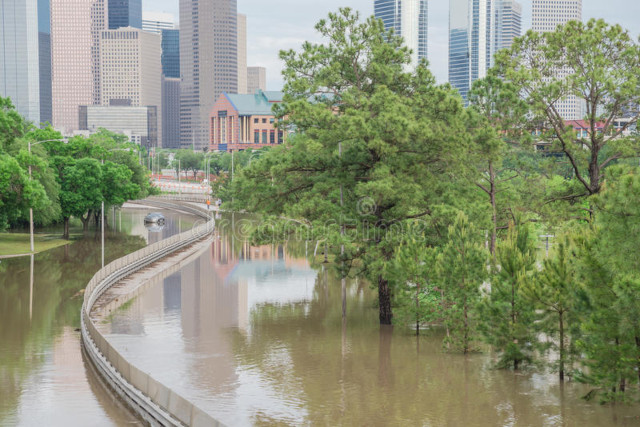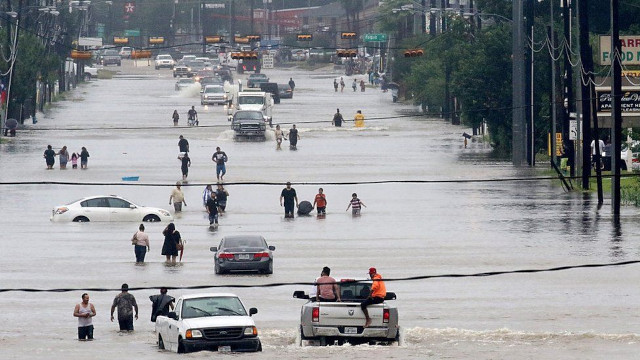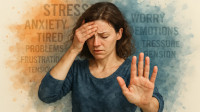
Flooding in Houston during Hurricane Harvey
For nearly half a century, the Clean Water Act (CWA) has stood as a bulwark against the unchecked discharge of pollutants into the bodies of water that comprise the vibrant tapestry of the United States. Passed in 1972, the CWA remains a cornerstone of the country's environmental legislation, protecting the "waters of the United States," including navigable waters and adjacent wetlands. From industrial effluents to agricultural runoff, the Environmental Protection Agency (EPA) and the Army Corps of Engineers strictly regulate pollutants that threaten these waters. Yet, the precise definition of the term "waters of the United States" has been a contentious issue since the inception of the Act.
The Controversy About Waters
It was in 2006 that the Supreme Court passed a verdict in the Rapanos v. United States case, giving a more restrictive interpretation to the term "waters of the United States." The ruling included only those water bodies which were "relatively permanent, standing or continuously flowing," such as rivers, oceans, lakes, and wetlands that maintain a "continuous surface connection" to these water bodies. This judgment curtailed the scope of wetland protection under the CWA, inciting ambiguity over the jurisdiction of the Act.
To clarify, the EPA and the Army Corps of Engineers put forth a rule in 2015 to define "waters of the United States." However, the rule was embroiled in legal battles and ultimately vacated by the Supreme Court in 2019. In the recent Sackett v. EPA case, the Supreme Court upheld the narrow definition of "waters of the United States" established in the Rapanos case. This ruling has eased the path for developers and landowners to alter wetlands without a permit, posing an alarming threat to the conservation of these unique ecosystems.
Consequences of the Supreme Court's Decision
The implications of the Supreme Court's verdict in Sackett v. EPA are far-reaching. With the lowered barrier for landowners and developers to modify wetlands without permits, millions of acres of wetlands are now vulnerable to destruction—moreover, the ruling risks undermining water quality and flood control. Wetlands are nature's cleaners, filtering pollutants from water, and they play a crucial role in flood mitigation. Their decimation could consequently trigger an upsurge in pollution and flooding.
The ruling also challenges the EPA and the Army Corps of Engineers enforcing the CWA. With a constricted interpretation of "waters of the United States," it will be harder for these agencies to regulate pollutant discharge into wetlands.
Lesson Not Learned By The Supreme Court
In 2017, Houston was battered by Hurricane Harvey. The storm caused extensive damage, much of which was due to catastrophic flooding. You may be thinking, "But flooding is a natural disaster. How can human decisions impact that?" And you'd be right to an extent, but here's where it gets interesting.

Flooding in Houston during Hurricane Harvey
As the floodwaters receded, it was clear that the damage was not just the result of the storm itself but also of decisions made years prior. Houston had been on an economic boom, thanks primarily to its oil and gas industries. With this boom came rapid development: new neighborhoods, businesses, roads, and parking lots. Unfortunately, some of this development overlapped with flood-prone areas covered by wetlands and prairies that naturally absorb flood waters.
Neighborhoods like Westlake Forest and Kingwood saw substantial construction during the late '90s and 2000s, even in areas designated as floodplains by FEMA. As a result, these areas were heavily flooded during Hurricane Harvey. Furthermore, many residents were ill-prepared for the disaster, with only about 15% of homes in Harris County having flood insurance policies.
The Road Ahead for the Clean Water Act
The Sackett v. EPA ruling has dealt a severe blow to conserving wetlands, making them more susceptible to unchecked modifications. The repercussions of this verdict could be devastating, potentially leading to the obliteration of millions of acres of wetlands, compromising water quality, and exacerbating flood scenarios. The future of the Clean Water Act, thus, hangs in the balance.
While the Clean Water Act's future remains uncertain following the Supreme Court's ruling in Sackett v. EPA, the impact on wetland protection is undeniably significant. Now, more than ever, there is an urgent need for action. Congress could step in to clarify the definition of "waters of the United States" and bolster protections for wetlands. States, too, could enact their legislation to safeguard these delicate ecosystems. The time to act to conserve these vital ecosystems is now.
Policy decisions can significantly impact our environment, health, and safety. The unchecked development in Houston contributed to the severity of the flooding during Hurricane Harvey. On the other hand, the Supreme Court ruling in Sackett v. EPA could lead to more situations like Houston's by reducing protections for wetlands, which play a critical role in flood control.
We need to make more informed decisions that consider the long-term impact on the environment and public health. Climate change is also a factor to consider. It's increasing the frequency and severity of extreme weather events, such as hurricanes, making protecting natural barriers like wetlands even more crucial. Furthermore, we must ensure that our cities and communities are prepared to deal with these events, including having adequate insurance coverage for potential flood damage.
We all have a role to play in protecting our environment and ensuring the health and safety of our communities. After all, we're all in this together. So let's ensure we're making decisions today to safeguard our future.
About the Author
 Robert Jennings is the co-publisher of InnerSelf.com, a platform dedicated to empowering individuals and fostering a more connected, equitable world. A veteran of the U.S. Marine Corps and the U.S. Army, Robert draws on his diverse life experiences, from working in real estate and construction to building InnerSelf with his wife, Marie T. Russell, to bring a practical, grounded perspective to life’s challenges. Founded in 1996, InnerSelf.com shares insights to help people make informed, meaningful choices for themselves and the planet. More than 30 years later, InnerSelf continues to inspire clarity and empowerment.
Robert Jennings is the co-publisher of InnerSelf.com, a platform dedicated to empowering individuals and fostering a more connected, equitable world. A veteran of the U.S. Marine Corps and the U.S. Army, Robert draws on his diverse life experiences, from working in real estate and construction to building InnerSelf with his wife, Marie T. Russell, to bring a practical, grounded perspective to life’s challenges. Founded in 1996, InnerSelf.com shares insights to help people make informed, meaningful choices for themselves and the planet. More than 30 years later, InnerSelf continues to inspire clarity and empowerment.
Creative Commons 4.0
This article is licensed under a Creative Commons Attribution-Share Alike 4.0 License. Attribute the author Robert Jennings, InnerSelf.com. Link back to the article This article originally appeared on InnerSelf.com
Related Books
The Human Swarm: How Our Societies Arise, Thrive, and Fall
 by Mark W. Moffett
by Mark W. Moffett
If a chimpanzee ventures into the territory of a different group, it will almost certainly be killed. But a New Yorker can fly to Los Angeles--or Borneo--with very little fear. Psychologists have done little to explain this: for years, they have held that our biology puts a hard upper limit--about 150 people--on the size of our social groups. But human societies are in fact vastly larger. How do we manage--by and large--to get along with each other? In this paradigm-shattering book, biologist Mark W. Moffett draws on findings in psychology, sociology and anthropology to explain the social adaptations that bind societies. He explores how the tension between identity and anonymity defines how societies develop, function, and fail. Surpassing Guns, Germs, and Steel and Sapiens, The Human Swarm reveals how mankind created sprawling civilizations of unrivaled complexity--and what it will take to sustain them. Available On Amazon
Environment: The Science Behind the Stories
by Jay H. Withgott, Matthew Laposata Environment: The Science behind the Stories is a best seller for the introductory environmental science course known for its student-friendly narrative style, its integration of real stories and case studies, and its presentation of the latest science and research. The 6th Edition features new opportunities to help students see connections between integrated case studies and the science in each chapter, and provides them with opportunities to apply the scientific process to environmental concerns. Available On Amazon
Environment: The Science behind the Stories is a best seller for the introductory environmental science course known for its student-friendly narrative style, its integration of real stories and case studies, and its presentation of the latest science and research. The 6th Edition features new opportunities to help students see connections between integrated case studies and the science in each chapter, and provides them with opportunities to apply the scientific process to environmental concerns. Available On Amazon
Feasible Planet: A guide to more sustainable living
by Ken Kroes Are you concerned about the state of our planet and hope that governments and corporations will find a sustainable way for us to live? If you do not think about it too hard, that may work, but will it? Left on their own, with drivers of popularity and profits, I am not too convinced that it will. The missing part of this equation is you and me. Individuals who believe that corporations and governments can do better. Individuals who believe that through action, we can buy a bit more time to develop and implement solutions to our critical issues. Available On Amazon
Are you concerned about the state of our planet and hope that governments and corporations will find a sustainable way for us to live? If you do not think about it too hard, that may work, but will it? Left on their own, with drivers of popularity and profits, I am not too convinced that it will. The missing part of this equation is you and me. Individuals who believe that corporations and governments can do better. Individuals who believe that through action, we can buy a bit more time to develop and implement solutions to our critical issues. Available On Amazon
From The Publisher:
Purchases on Amazon go to defray the cost of bringing you InnerSelf.com, MightyNatural.com, and ClimateImpactNews.com at no cost and without advertisers that track your browsing habits. Even if you click on a link but don't buy these selected products, anything else you buy in that same visit on Amazon pays us a small commission. There is no additional cost to you, so please contribute to the effort. You can also use this link to use to Amazon at any time so you can help support our efforts.



